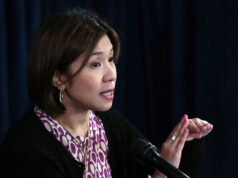Analysts, exporters watch peso fortunes
THE PESO has turned out to be one of Asia’s stronger, less volatile currencies, the Department of Finance (DoF) said in an economic bulletin on Monday, even as economists say fortunes could change towards yearend and an exporters’ group remained cautious.
The DoF bulletin showed the peso second to the Thai baht as of end-July in terms of strength against the dollar. It was also in the middle of 12 Asian currencies in terms of volatility. The peso weakened by 0.7% to close at P51.79 to the greenback on Monday from P51.43 per dollar on Friday last week, but it was still 1.38% stronger than its P52.515 finish on Jan. 2.
In its July 18 meeting, the Development Budget Coordination Committee revised its peso-dollar exchange rate assumption to a stronger P51-53 against the greenback for 2019, compared to P52-55 previously, “projecting the possible appreciation of the peso with easing inflation pressures and positive market sentiment with the recent sovereign rating upgrade of the Philippines” by S&P Global Ratings in April.
Sought for comment, Ruben Carlo O. Asuncion, chief economist at UnionBank of the Philippines, Inc., said in an e-mail that “[i]t must be noted, however, that foreign exchange currencies, in general, are highly volatile”, even as the bank’s Economic Research Unit now expects the peso to end the year at P52.50 to the dollar from P53.50 previously.
ING Bank senior economist Nicholas Antonio T. Mapa said in an e-mail that “[d]espite recent relative strength, we see the peso facing depreciation pressures as seasonal demand for imports kicks in by the third quarter, coupled by further [interest rate] cuts from the Bangko Sentral ng Pilipinas to force the peso to settle the year close to P53…”
Philippine Exporters Confederation, Inc. Sergio R. Ortiz-Luis, Jr. said by phone that “definitely” the stronger peso has been “affecting our competitiveness,” even as he added that “so long it’s market-driven, I think it’s okay; huwag lang masyadong bumaba (so long as it does not strengthen too much).”
Still, he has “heard” that smaller food and handicraft exporters have been more affected than others. — Beatrice M. Laforga



